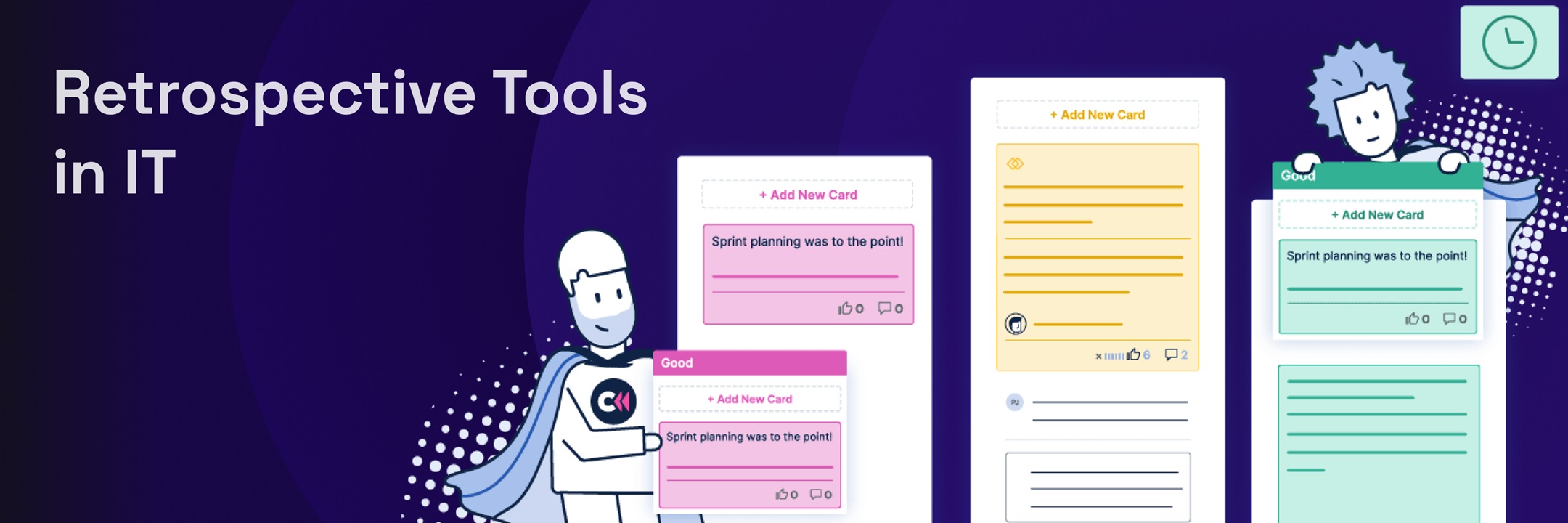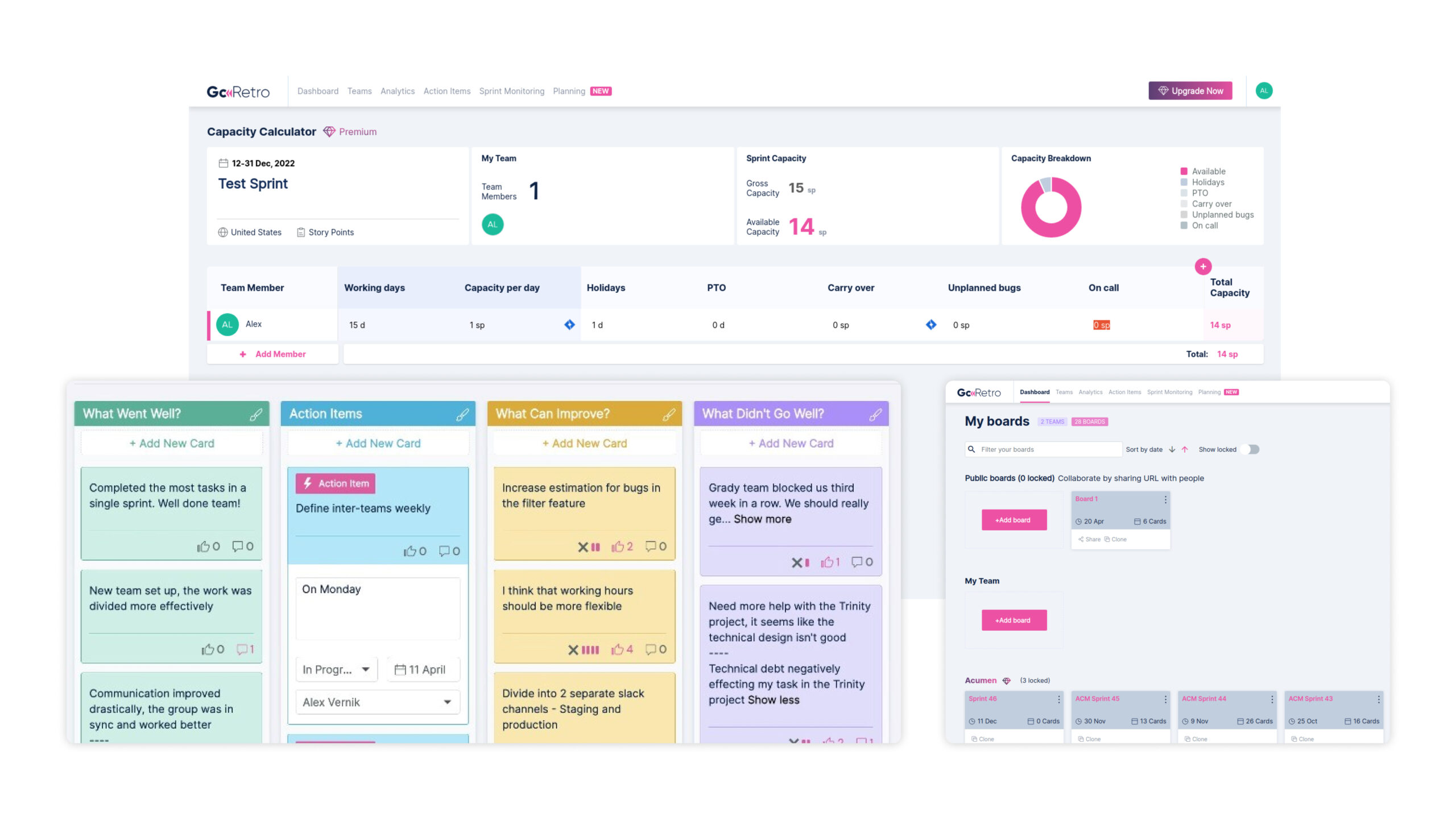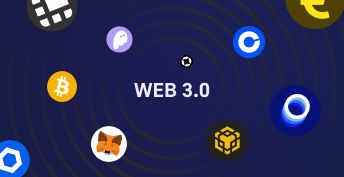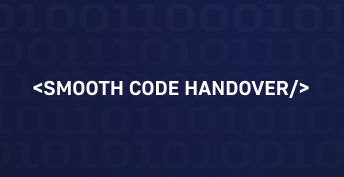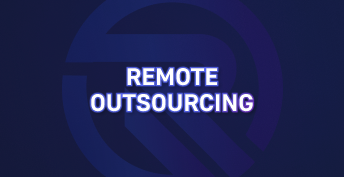Intro
“A retrospective is anytime your team reflects on the past to improve the future. Between technical and non-technical teams, you can retro on just about anything” — Atlassian*.*
Retrospectives are an essential part of the software development process in Agile methodologies such as Scrum. These regular team meetings focus on looking at the past iteration or project phase to discuss what went well, identify areas for improvement, and agree on actionable steps to enhance future performance. This process fosters continuous improvement by allowing teams to learn from their experiences, address issues, and adapt their practices to be more effective and efficient.
Retrospective tools: market leaders
In an era where most teams hold retrospectives online, choosing the right tools is crucial. This section highlights market leaders in retrospective tools that facilitate effective analysis, problem identification, and improvement planning.
GoRetro
Leading online service for retrospectives. It offers a virtual whiteboard where users can add sticky comments, vote on ideas, and utilize retrospective templates. GoRetro is suitable for both synchronous real-time and asynchronous collaboration.
GoRetro’s metric cards
Retrium
Another powerful tool for facilitating retrospectives. In addition to standard features, it offers an AI assistant for moderating discussions, automated insight summaries, and integration with popular task trackers. Retrium emphasizes participant engagement and consideration of different perspectives.
Retrium – powerful tool for facilitating retrospectives
EasyRetro
Simple and intuitive service for retrospectives. Its user-friendly minimalistic interface distinguishes it, the possibility of anonymous participation, and flexible board privacy settings. EasyRetro is optimal for small teams that need a quick start without unnecessary features.
EasyRetro: Retrospective’s board view
ScatterSpoke
ScatterSpoke positions itself as a tool for “next-generation retrospectives.” It utilizes elements of gamification, allows you to create custom board templates, and has advanced analytics and export capabilities. ScatterSpoke will suit teams that want to customize the retrospective process deeply.
ScatterSpoke: main features
Emerging Trends and Key Features in the Retrospective
The way teams conduct retrospectives is changing, thanks to new trends that are making these sessions more effective. Artificial Intelligence (AI) and machine learning are increasingly being utilized to improve the retrospective process. These technologies enable advanced features such as sentiment analysis and predictive insights, helping teams better understand feedback patterns and forecast potential challenges.
Advanced analytics and reporting are now integral to the retrospective process. Modern approaches include sophisticated data visualization and trend analysis, which provide deeper insights into team performance and effectiveness.
Integration capabilities play a crucial role in streamlining retrospectives. By connecting with project management and communication platforms like Jira or Slack, teams can easily capture and act on feedback without disrupting their existing workflows.
Collaboration tools are becoming more essential, particularly for remote and distributed teams. The integration of virtual whiteboards and video conferencing platforms into the retrospective process facilitates effective communication and brainstorming, ensuring that all team members can participate actively, regardless of their location.
The ability to customize retrospectives is also growing in importance. With options for personalized templates and flexible surveys, teams can adapt the process to fit their specific goals and challenges, making the sessions more relevant and impactful.
Measuring the Effectiveness of a Retrospective
Determining the effectiveness of a retrospective involves assessing various indicators that reflect how well the meeting supports team improvement and productivity. Below we provide some key metrics from our experience that demonstrate the effectiveness of retrospectives.
#1 Actionable Outcomes
The primary measure of effectiveness is the implementation of actionable items agreed upon during the retrospective. Teams should track whether these action items are being executed and if they lead to tangible improvements.
#2 Resolution of Issues
An effective retrospective should help in identifying and resolving recurring issues. Monitoring whether previously discussed problems are addressed and resolved can indicate the success of the meeting.
#3 Quantitative Metrics
Look at performance metrics such as productivity, cycle time, or defect rates before and after implementing changes from retrospectives. Positive shifts in these metrics can be a sign of effective retrospectives.
#4 Team Engagement
Effective retrospectives encourage open communication and active participation from all team members. Measuring engagement through feedback or observing participation levels can help gauge the retrospective’s impact on team morale and collaboration.
Our experience in developing solutions for efficient Retrospectives
Since we frequently conduct retrospectives ourselves, we have firsthand knowledge of what users look for when choosing a retrospective tool. Key functionalities should usually include a virtual whiteboard for brainstorming and organizing thoughts, voting mechanisms for prioritizing ideas, and customizable templates to fit various retrospective formats. Integration with other tools like Jira, Trello, or Slack is super important as well, and can streamline workflow and enhance communication. Effective retrospective tools not only foster transparent and constructive discussions but also track action items and metrics to monitor progress and outcomes over time, thereby driving ongoing team development and productivity.
We placed the GoRetro tool at the top of the list for a reason: our team took part in its development. GoRetro is an online collaboration tool that helps teams effectively conduct retrospectives in Agile/Scrum development methodology. Its main features are:
- A virtual whiteboard where team members can add their thoughts, ideas, and comments in post-it note format. The board is usually structured by columns “What went well”, “What can be improved”, “Actions”.
- Anonymous addition of comments, allowing participants to speak honestly and not be afraid of criticism.
- Voting/highlighting the most important points for further discussion.
- Templates for popular retrospective formats – Start/Stop/Continue, Mad/Sad/Glad, 4Ls, etc.
- Synchronous and asynchronous modes of operation. You can perform retrospectives in real-time or over several days.
- Export results in various formats and integrate with Jira, Slack, and other IT tools.
Multifunctionality of GoRetro
The usefulness and effectiveness of these features are demonstrated by the positive reception from users. This feedback highlights how the tool’s design aligns with user needs, fostering engagement and enhancing the retrospective process:
- On review sites G2Crowd and Capterra, GoRetro has a rating of 4.5 out of 5 based on several hundred reviews, indicating high user satisfaction.
- For the query “retrospective tools” on Google, GoRetro consistently ranks at the top of the organic results of different reviews, indicating its high relevance and popularity in this category.
- On its blog and social media channels, the company reported double-digit percentage growth in revenue and users year-over-year.
Summary
Retrospectives are a powerful tool for driving improvements and addressing issues within a team. These meetings provide an opportunity to step back, reflect on the process, and gather diverse perspectives. What’s crucial is that retrospectives focus on identifying and resolving blockers or challenges, rather than assigning blame to individual members. This problem-solving mindset is what makes retrospectives key to a team’s success and overall effectiveness.
Although there are numerous scenarios for running retrospectives, we believe that each team should ultimately find its own approach through trial and error and by analyzing effectiveness. With so many online tools available, teams have plenty of options to customize the process to suit their needs.
At IT-Dimension, we are proud to help various sectors of business and life thrive by providing modern web, mobile, and desktop solutions tailored to diverse needs and objectives.
Contact us today to discuss your future growth and development solutions!
Links:
https://www.goretro.ai/retrospective
https://www.retrium.com/features/retrospective-history
https://easyretro.io/features
https://www.scatterspoke.com/why-us
https://www.funretrospectives.com
